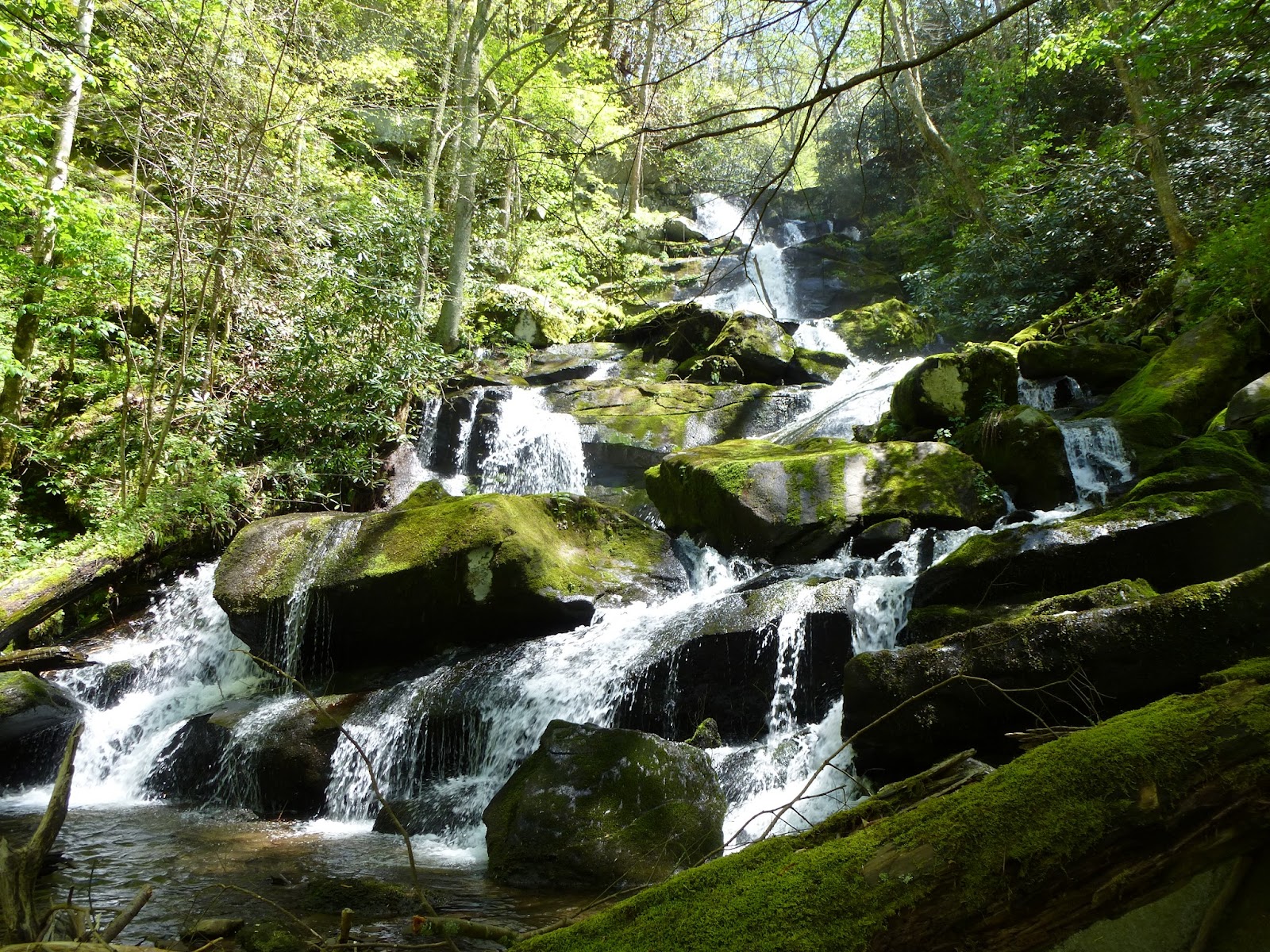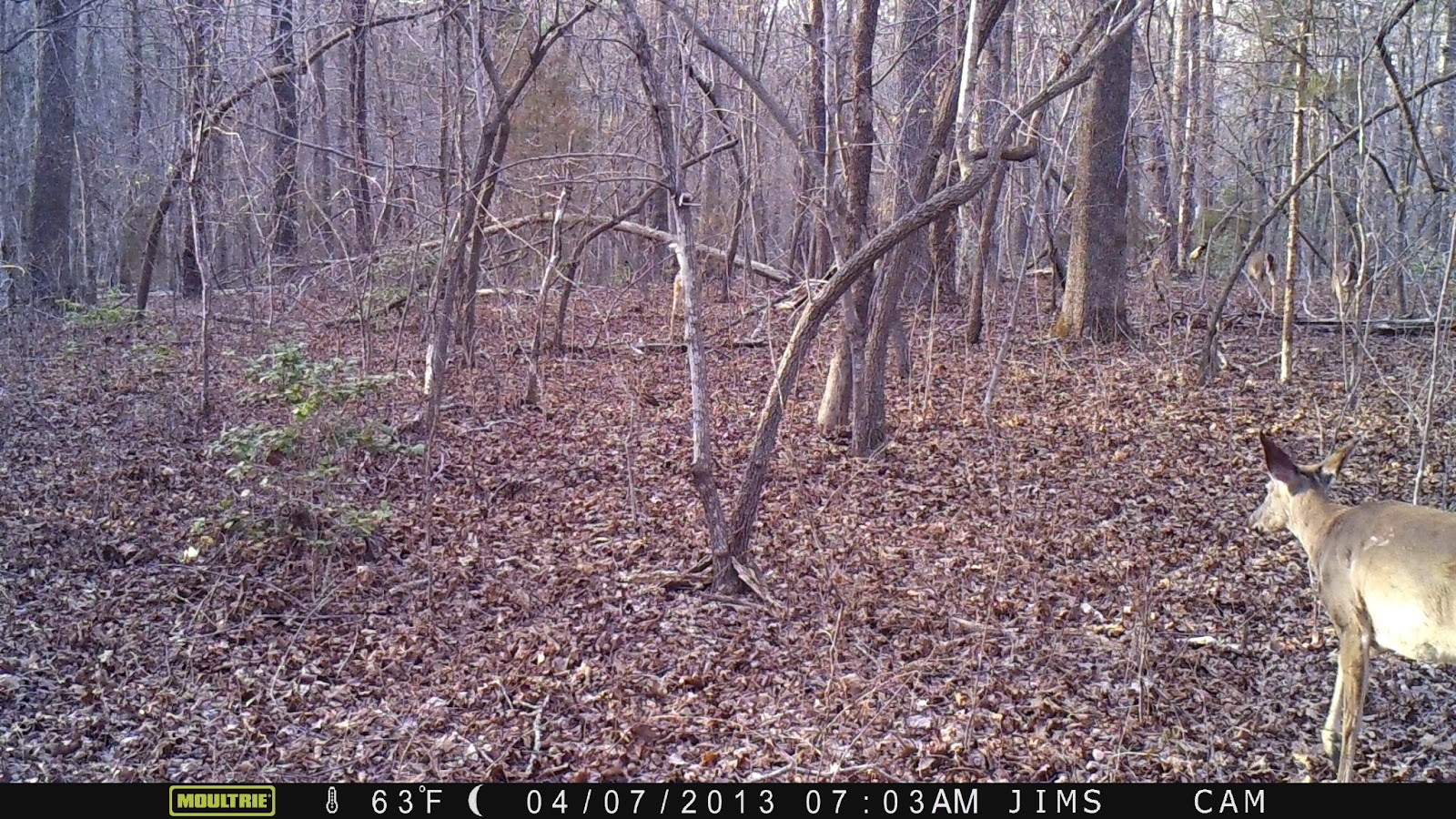Sugarland Mountain Trail follows a ridge from the Appalachian Trail to Fighting Creek Gap (more often referred to as the "parking area for Laurel Falls"). The small group of 12 meets at the parking area and are driven to the top in a UT van piloted by Spring Wildflower Pilgrimage coordinator Ken McFarland. It is a tight squeeze in the back. The windows fog and I really can't see much on the drive but do get to converse with a couple seatmates.
When we stop and pile out, I'm expecting freezing temperatures but instead remove my outermost layer. Our leader is the multi-faceted Doris Gove, a trained entomologist, hiking guide author, botanist, salamander seeker and fellow former New Englander. I've hiked with her several times before and anticipate a lively hike sprinkled with her folksy trailside commentary and wry sense of humor. As we make pre-hike introductions, "Tree Guy" informs us he will be taking rudimentary tree measurements as we go. He intends to loosely follow us as he conducts his survey. He explains his interest in this particular trail as it once was the boundary between the timber properties of Champion and Little River. Little River cleared up to the ridge but Champion did not. He is interested in what trees are there and how large they are. A map of old growth forest is available at Sugarlands Visitors center. Later, several of us will run into each other purchasing that map. Our trained Botanist today is Chris Fleming, a handsome young environmental consultant from Nashville. Two days later he will be married at the Missionary Baptist Church in Cades Cove. He explains it requires a $50 permit - what a bargain. Their reception is at the fine dining establishment in Townsend, the Dancing Bear and a delayed honeymoon - Memphis in May is planned. He has a great personality and explains flowers quite knowledgeably and in an easy to understand fashion. Our sweep is Allen Sweetzer. I've met and hiked with Allen before. He is part owner of a cabin near Scott Mountain, right at the end of the manway leading up and out of White Oak Sinks. He is the resident expert on the Sinks. I comment to him about our mutual acquaintance, Margie Hunter and her AT trek. I have followed her excellent blog Smokies Blog. Allen confirms, she is not enjoying her AT hike. I hope that changes.
Our hike today is described as a hike through Spring. Beginning high in elevation, we begin to see the earliest signs of Spring, Trailing Arbutus, then Spring Beauties and Trout Lilys. Further we run into the second wave of Spring wildflowers, Trilliums, Bellworts, chickweed, violets and the rest of the usual suspects.
We make an early stop at Mt Collins shelter. No one is there. Doris informs us, her hiking club, Smoky Mountain Hiking Club has completed renovation of all shelters in the park. This shelter was renovated a couple years ago. Previous shelters were typical Adirondack style, three sided shelters with a wire mesh across the front. Hiker interactions with bears was commonplace. A club member architect redesigned the shelters to encourage food consumption at a covered table away from the sleeping area. This design has reduced the number of bear encounters. However, it has not eliminated them and when encounters are reported, sometimes campsites and shelters may be closed until bears have moved on elsewhere. A moldering privy accompanies the shelter. Above ground decomposition of waste is more effective than a below ground pit privy. The drawback is, hikers are asked not to pee in the privy as this retards the decomposition process.
The photo above is of a tree growing from another tree. This growth is occurring about 40 feet up which is quite unusual.
A mountain wren sings to us. It is such a pretty song, so much nicer than the emphatic Carolina wrens in my yard. We also hear Black and White, Black Throated Green and Hooded Warblers. A blue backed, white fronted bird is spotted but we have no bird experts along so we guess wildly at what we are watching. Later a fledgling Hooded Warbler alternately flits ahead of us for about a hundred yards. I got one good look at this handsome yellow fellow.
Chris did a great job explaining the differences in Chickweed. Above we have a Tennessee Chickweed flower. Below we have a Bellwort. We also say many Sesile Bellworts, also called Wild Oats. Finally, my last photo is of Wood Betony or as Pilgrim Cindy pointed out, "Lousewort". Despite the unpleasant name, she thought there was a kinder meaning of the term. I have learned the name is derived from the word "wort" meaning plant and the belief the plant either caused or cured lice. Today we know the plant hasn't anything to do with lice and so, perhaps it does deserve a nicer name.
We travel through several very rich seeps with an abundance of plant diversity. These areas are of special interest to Chris. He takes many photos as we work our way through. In one such area we see dozens of large Cherry trees. Obviously this area was not timbered as it was perhaps the most valuable tree of any in the forest and these specimens were hundreds of years old.
At our final trail break, Pilgrim Beth pulls out her cache of gourmet foods and passes out some very tasty vegetable chips. At lunch she was very generous with her smoked gouda, crackers and dried peaches. I learned later she is an accomplished adventurer with visits to the Congo, a cross state bicycle ride and other endeavors. Her trail companion, Pilgrim Cindy was a delightful hiking companion on the final leg to Fighting Creek Gap. She is well read and has similar outdoor interests. A June float through Grand Canyon is on her agenda. I also enjoyed hiking with longtime friend, Pilgrim Randy. His hearing prevents much trail conversation but I've enjoyed his companionship on numerous hikes.
This evening my foot told me it had had enough of these hikes so I made plans to skip tomorrows 13 mile jaunt between Elkmont and Tremont. My foot was so happy I made that call.



























































